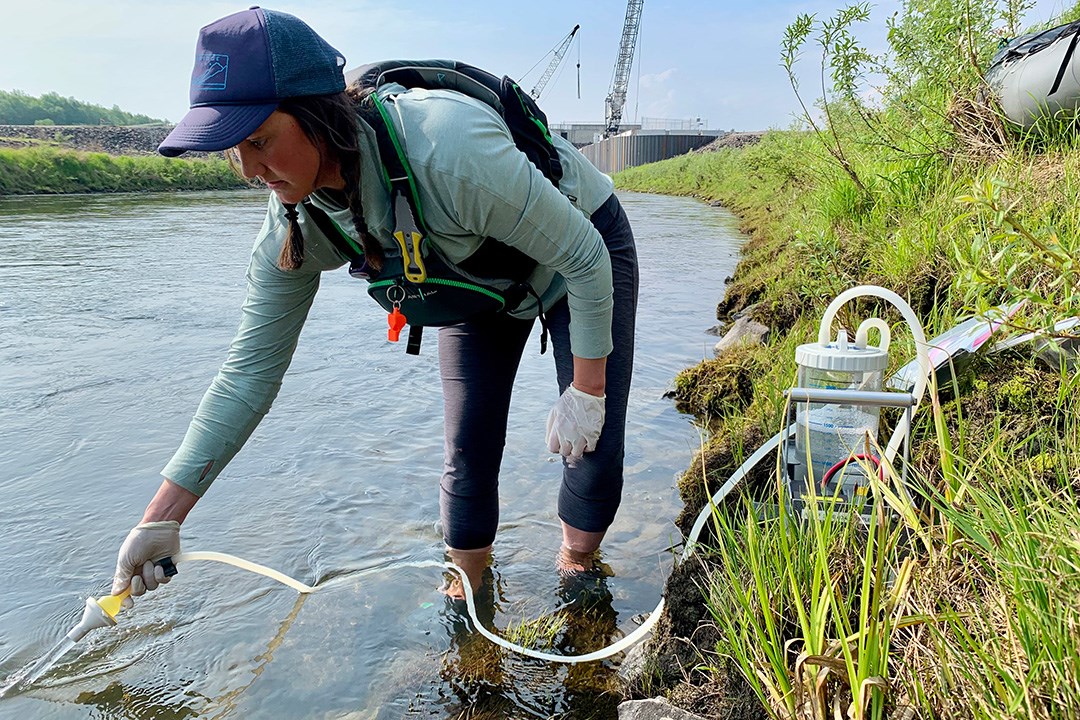
State, federal and Tribal entities estimate run timing and abundance for Chum (Oncorhynchus keta) and Chinook Salmon (O. tshawytscha) throughout the Yukon River Basin. These estimates aid in-season fishing regulation modifications as well as predictions for upcoming salmon seasons.
In recent years, increasingly frequent high streamflow events have created gaps in salmon escapement estimates when high water has disrupted the operation of weirs, counting towers, and sonar installations. Simultaneously, severe declines in salmon abundance have resulted in recreation and subsistence fishing closures. In response, we are testing a complementary method to estimate salmon abundance by measuring concentrations of salmon DNA in river water.
During the 2021 and 2022 field seasons, federal and Tribal partners collected 728 water filtrate samples over 238 total sampling days in the Chena, Salcha, East Fork Andreafsky and Gisasa rivers as well as Henshaw Creek.Us ing validated, species-specific quantitative PCR (qPCR) assays, we are quantifying Chinook and Chum Salmon DNA in the samples. Metabarcoding will also be used to confirm species detected during qPCRs. We will test the performance of DNA concentrations and environmental covariates in estimating daily salmon counts.
Other studies in Alaska have demonstrated the use of similar methodology, though this is the first to assess the feasibility of such efforts at salmon counting sites in systems with relatively low salmon densities. Our long-term vision is to build capacity to support cost-effective monitoring of fish populations and enhance climate change resilience in salmon assessment and fisheries throughout Alaska.